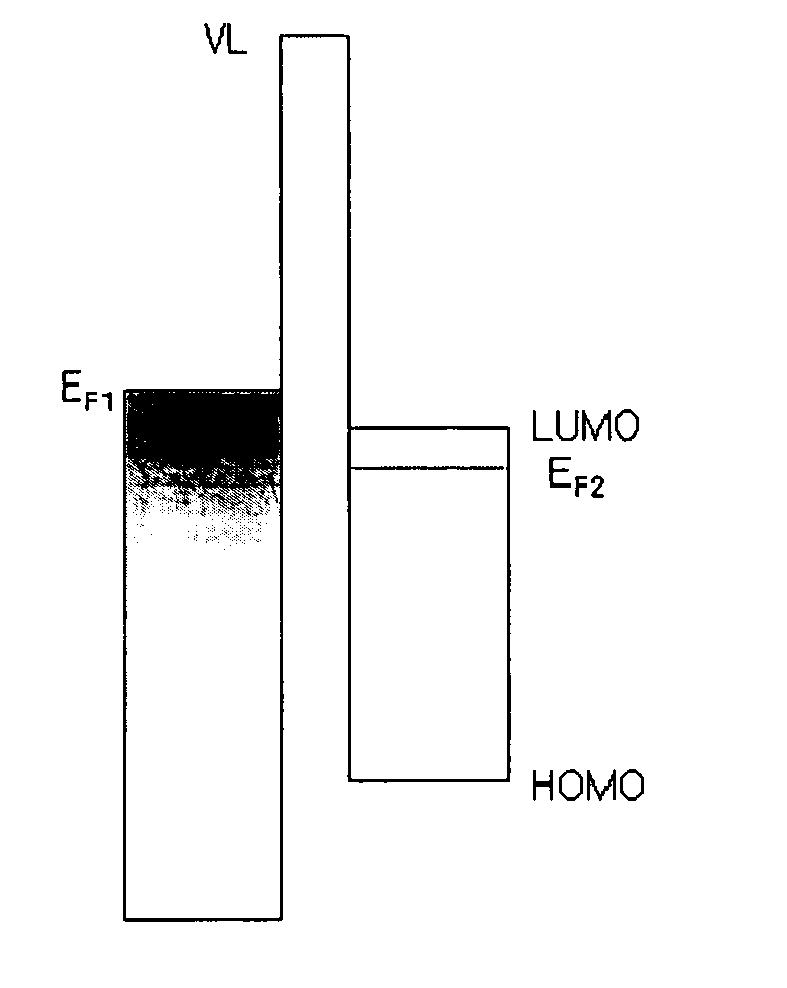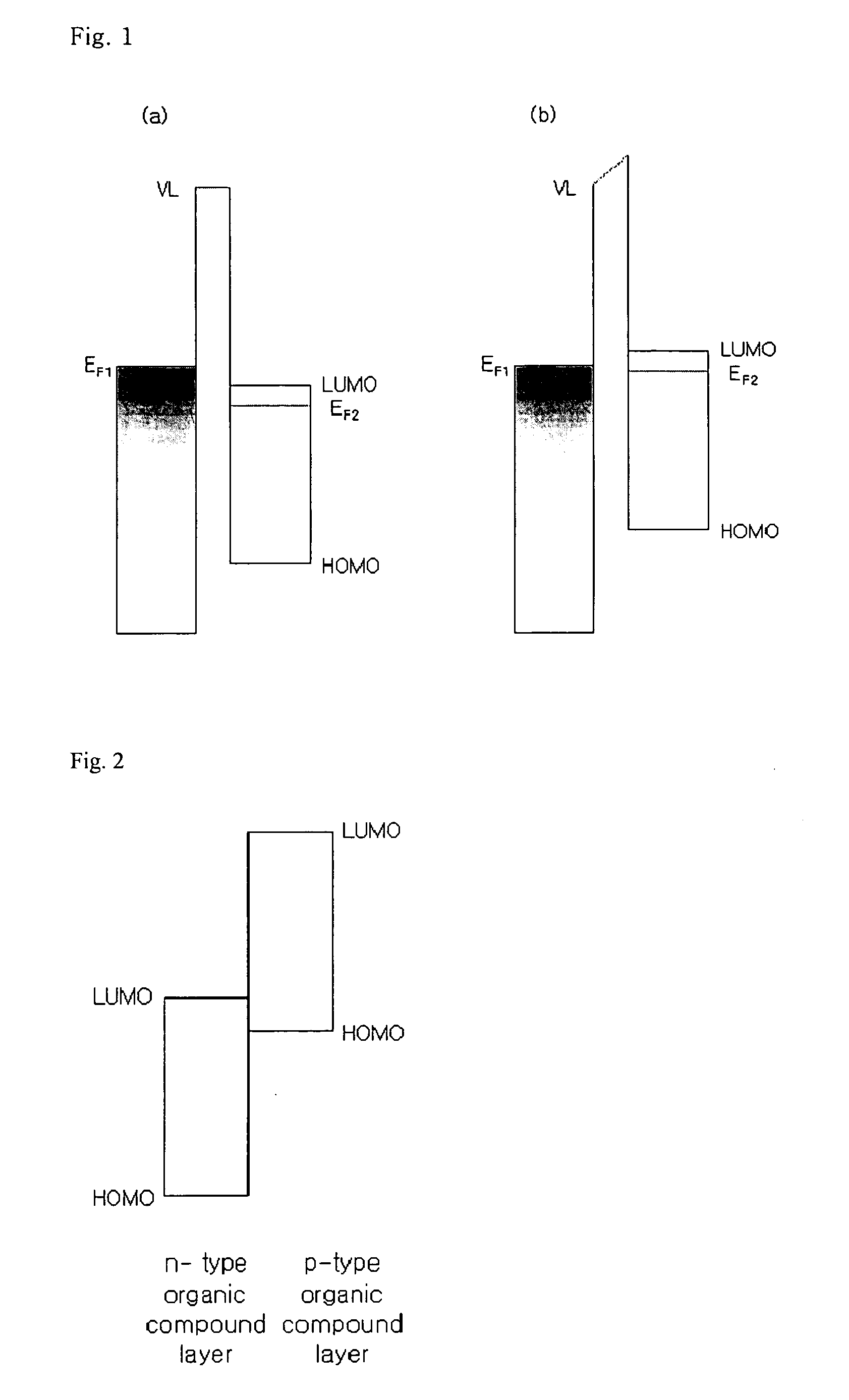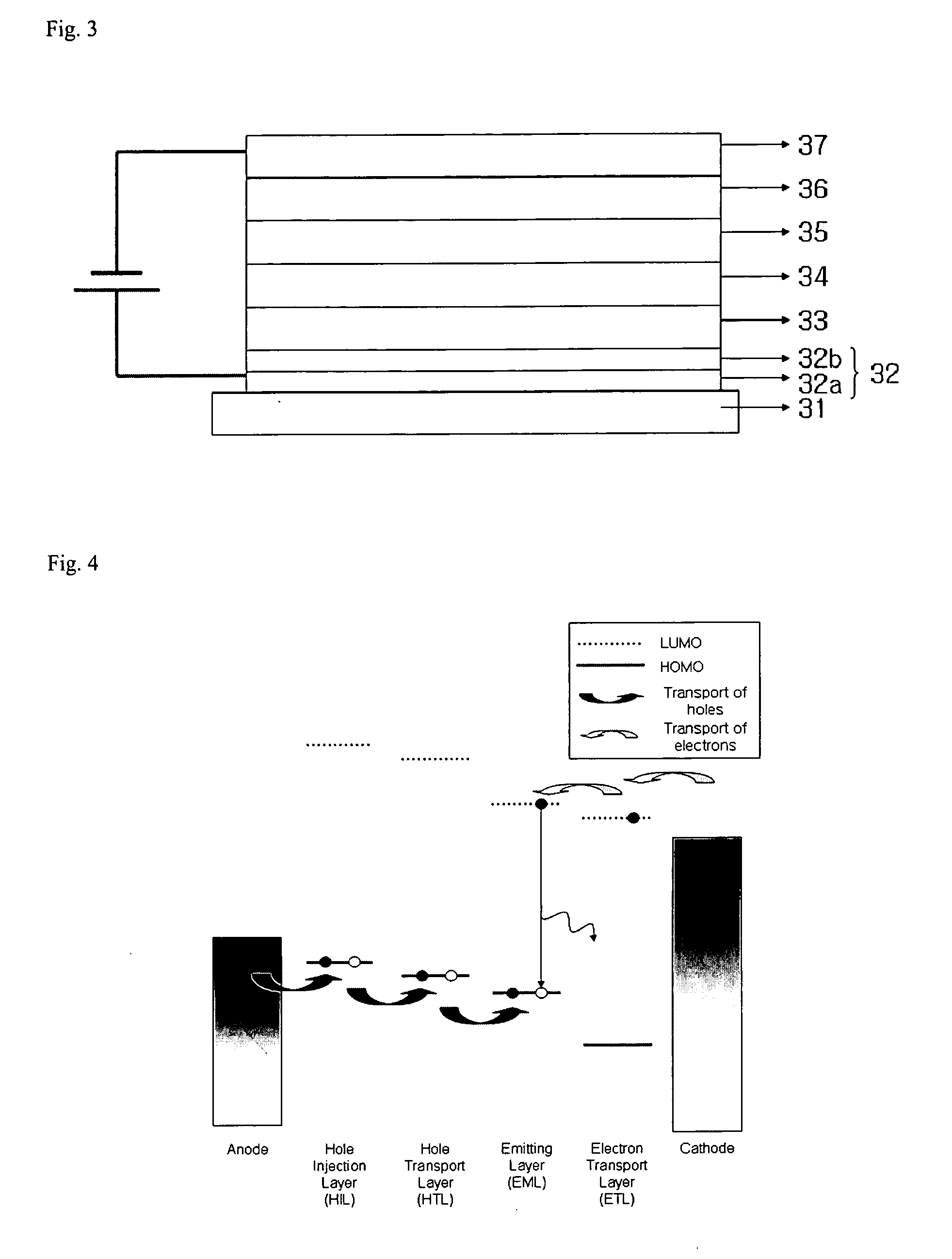Organic electronic device
a technology of electronic devices and organic compounds, applied in the field of electronic devices, can solve the problems of unstable interface between electrodes and electrodes, adversely affecting the performance of electronic devices, and limitation in choosing compounds for hole injection layers,
- Summary
- Abstract
- Description
- Claims
- Application Information
AI Technical Summary
Benefits of technology
Problems solved by technology
Method used
Image
Examples
example 1
Determination of HOMO and LUMO Energies of HAT with UPS and UV-VIS Absorption
[0077] Hexanitrile hexaazatriphenylene (HAT) was used for an organic compound having n-type semiconductor property. The HOMO energy of the HAT was determined by Ultraviolet Photoelectron Spectroscopy (UPS) in which the Vacuum UV line (about 21.20 eV) emitted from a Helium lamp was illustrated to a sample under an ultra high vacuum (−10 Torr) and the kinetic energy of the electrons emitted from the sample was examined.
[0078] With the UPS, the work function of metals and the ionization energy (HOMO energy and Fermi energy) of organic compounds were determined, respectively. The kinetic energy of the emitted electrons was the energy difference between the electron binding energy of the sample and the vacuum UV energy (about 21.2 eV). Therefore, the distribution of the binding energy of the materials contained in the sample was determined by analyzing the distribution of the kinetic energy of the emitted ele...
example 2
Hole Injection Characteristic of HAT
[0082] A glass substrate coated with the ITO having a thickness of 1000 Å was ultrasonic washed for thirty minutes in a distilled water in which a detergent was melted. Corning 7059 glass was used as the glass substrate, and the product 15-333-55 manufactured by Fischer Co. was used as the detergent. The glass substrate was further ultrasonically washed in the distilled water for ten minutes, which was repeated twice.
[0083] After washing, the glass substrate was sequentially ultrasonic washed for one minute in an isopropyl alcohol solvent, an acetone solvent, and a methanol solvent, and then dried. Then, the ITO coated glass substrate was treated by plasma for five minutes in a plasma cleaner by using nitrogen under a pressure of about 14 mtorr and a power of about 50 W. As a result, the work function of ITO was about 4.8 eV.
[0084] The HAT of about 100 Å was thermally deposited on the ITO electrode under vacuum to form an anode having an ITO c...
example 3
[0088] A glass substrate such as Coming 7059 glass was ultrasonically washed in a distilled water in which a detergent was dissolved. The product manufactured by Fischer Co. was used as the detergent, and the distilled water was twice filtered with the filter manufactured by Millipore Co. After washing the glass substrate for thirty minutes, the glass substrate was further ultrasonic washed in the distilled water for ten minutes, which was repeated twice.
[0089] After washing, the glass substrate was sequentially ultrasonically washed in an isopropyl alcohol solvent, an acetone solvent, and a methanol solvent, and then dried. Then, the Al having a thickness of about 500 Å was vacuum deposited on the glass substrate, and the HAT having a thickness of about 100 Å was heat and vacuum deposited on the Al conductive layer, thereby forming the anode having the Al conductive layer and the HAT n-type organic compound layer. Then, the 4,4′-bis[N-(1-naphthyl)-N-phenylamino]biphenyl (NPB) comp...
PUM
| Property | Measurement | Unit |
|---|---|---|
| Fermi energy | aaaaa | aaaaa |
| HOMO) | aaaaa | aaaaa |
| HOMO energy | aaaaa | aaaaa |
Abstract
Description
Claims
Application Information
 Login to View More
Login to View More - R&D
- Intellectual Property
- Life Sciences
- Materials
- Tech Scout
- Unparalleled Data Quality
- Higher Quality Content
- 60% Fewer Hallucinations
Browse by: Latest US Patents, China's latest patents, Technical Efficacy Thesaurus, Application Domain, Technology Topic, Popular Technical Reports.
© 2025 PatSnap. All rights reserved.Legal|Privacy policy|Modern Slavery Act Transparency Statement|Sitemap|About US| Contact US: help@patsnap.com



